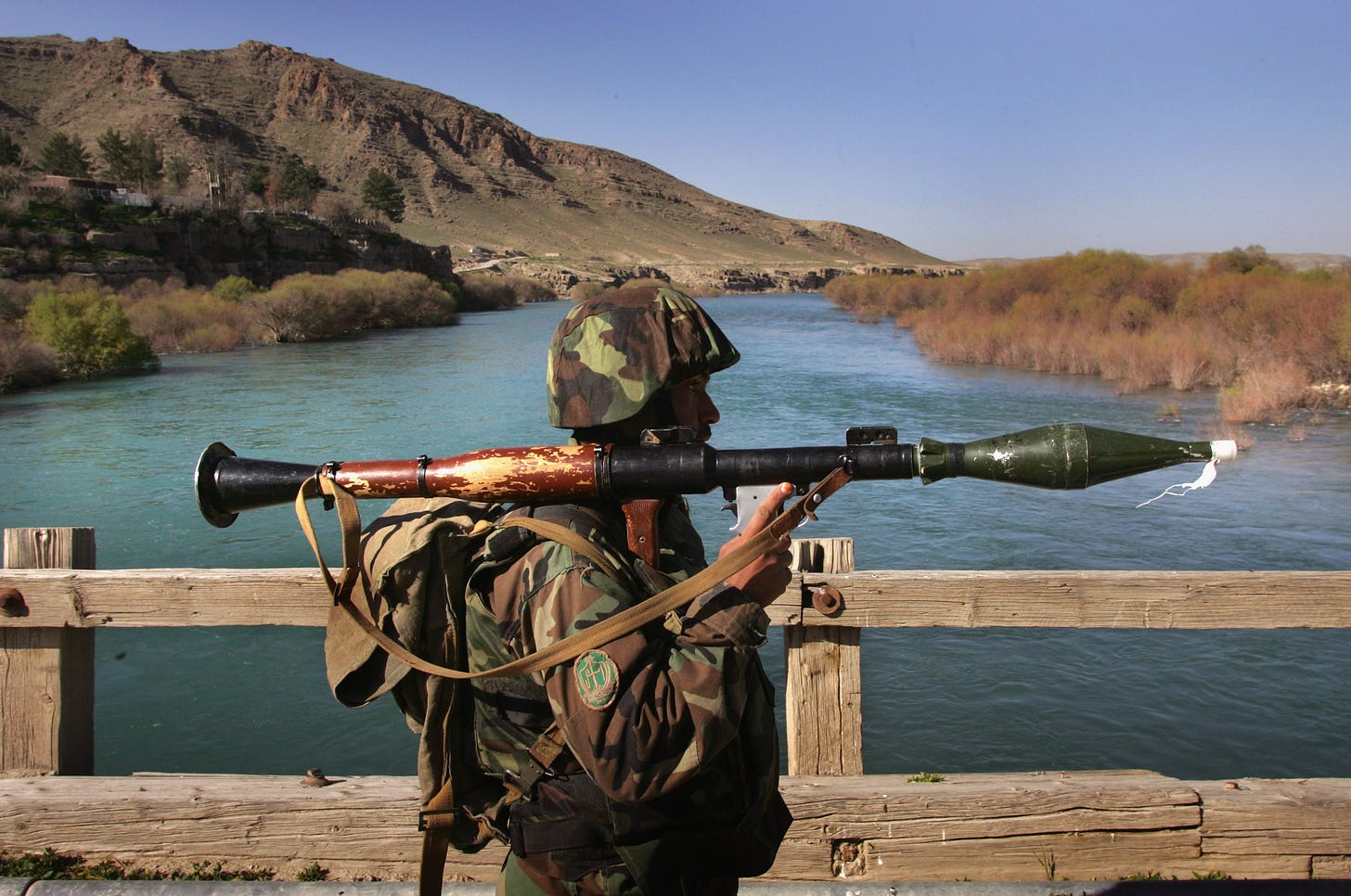USAID Kept My Troops Safe in Afghanistan
If not for American aid, we would have faced more enemies and won fewer friends.

IN 2008, I DEPLOYED TO AFGHANISTAN for the first time on a Provincial Reconstruction Team. Our group included active-duty airmen and soldiers as well as reservists and guardsmen. But the linchpin of our team was our USAID embed, David. He may not have been lethal with a weapon, but without him we would have failed catastrophically.
David had been to Iraq before he volunteered in Afghanistan. He not only went outside the wire in some of Afghanistan’s most dangerous, insurgent-infested regions, but also showed the ropes to newbies like myself.
In 2008, most of America’s military might was focused on Iraq, so those of us fighting the “good war” in Afghanistan had to make do with what we could get. For most of my deployment, we had fewer than 300 personnel (my small squad from the PRT and a company of the 101st) to hold down most of Kapisa, a province of 700 square miles and half a million people. We did not have the military might to clear and hold terrain. David and the USAID were the only way we could get into hard-to-reach places.
USAID helped us make friends and allies in Afghanistan that no number of soldiers, diplomats, or intelligence officers could. Food and medicine and infrastructure buy good will, good will translates to conversations, and conversations turn into intelligence and partnerships, which were vital not only to our mission but to keeping us safe.
David wasn’t the only USAID representative I served with. Through my career, I proudly served alongside hundreds of USAID personnel. Some, like my friend Jody, served for years in Afghanistan. USAID frequently sends its employees—armed only with humanitarian aid—into areas the military deems too dangerous for conventional forces. It should come as no surprise that these American heroes sometimes make the ultimate sacrifice.
In Afghanistan, USAID saved a lot of American lives. Those wells, schools, and hospitals may have eventually fallen into the Taliban’s hands. But for nearly twenty years, they helped rear and sustain a new generation of Afghans who are itching to overthrow the Taliban.
The USAID-funded projects we oversaw helped us make allies in the Pashtun heartland. These projects kept us safe. We still got shot at, and one of my airmen was killed, but without USAID, more disgruntled Pashtuns would have joined the insurgency.
There’s a good-hearted debate about the effectiveness of development funds. If you’re trying to turn a poor, war-torn society into Sweden, no amount of foreign aid is enough. But if you’re trying to buy influence and power on the cheap, boxes of food and fuel marked “From the American People” are a lot cheaper than tanks and bombs. Funding foreign radio stations may sound weird, but those I funded helped locate IEDs before they could kill or maim Americans and identified human intelligence sources.
THE PROBLEM WITH USAID wasn’t that it was a den of radical woke liberals. If anything, the problem was that it wasn’t independent enough.
It is easy to point to USAID’s Afghanistan portfolio and find absurd projects that didn’t work. But most of the projects were directed by the Departments of Defense or State. The Department of Defense devised USAID’s overarching strategy in Afghanistan. Then they assigned lowly captains—like I was in 2008—with no development training to oversee USAID and help “extend the reach of the Afghan government.” The pros were not in charge.
In 2010, I served on a State Department-led Provincial Reconstruction Team in Diryala Province in eastern Iraq. The diplomatic leadership wasn’t perfect, and we made many mistakes, as everyone does in a war. Yet even with State nominally in charge, the projects that USAID approved were at the direct behest of the division commander. If President Donald Trump wants to know why we wasted so much money, he should start asking questions of Secretary of Defense Pete Hegseth and leave USAID out of it.
In Afghanistan, I approved millions of dollars in aid. We helped build roads, girls’ schools where previously there had been schools only for boys, and hundreds of wells. Those projects didn’t result in a free, democratic, and independent Afghanistan—but that’s mostly because the Trump and Biden administrations gave up. Afghanistan, as dangerous as it was, wasn’t lost until Trump signed that Doha Agreement.
USAID is an easy punching bag for conservatives, and so is the Department of State. People who like to sound tough reflexively back the guys in fatigues with guns over the guys in jeans with sacks of grain or the guys in suits with papers. But take it from someone who spent nearly 1,500 days downrange over the course of 20 years: USAID is worth every penny. I wish I could say the same for the Department of Defense, which spends money on a scale USAID could only dream of, and often with more waste.
USAID, like the entire national security state, needs to be reformed after losing two wars. The leadership of the Defense and State Departments and USAID over the past twenty years have a lot to answer for, and the process of how aid projects are chosen—and by whom—is in desperate need of reform. But you can’t hold those on the front line responsible for enacting a strategy created by previous administrations. And firing aid officers deployed to dangerous locations around the world will only make us less safe.
I couldn’t be prouder to have served alongside USAID in Iraq and Afghanistan. They are American heroes and should be treated as such.



